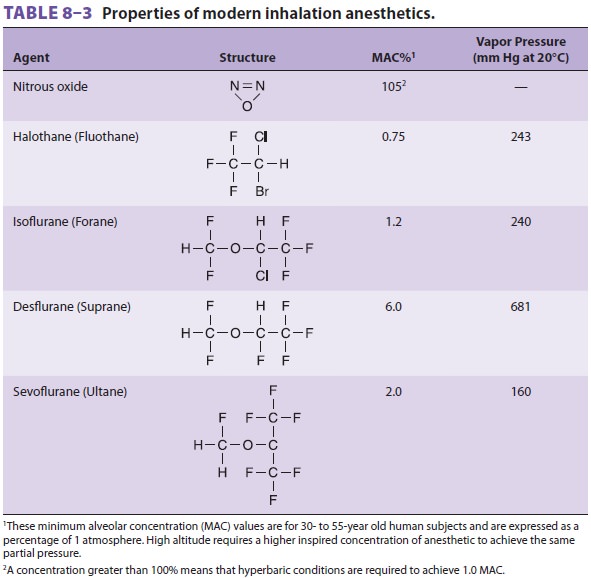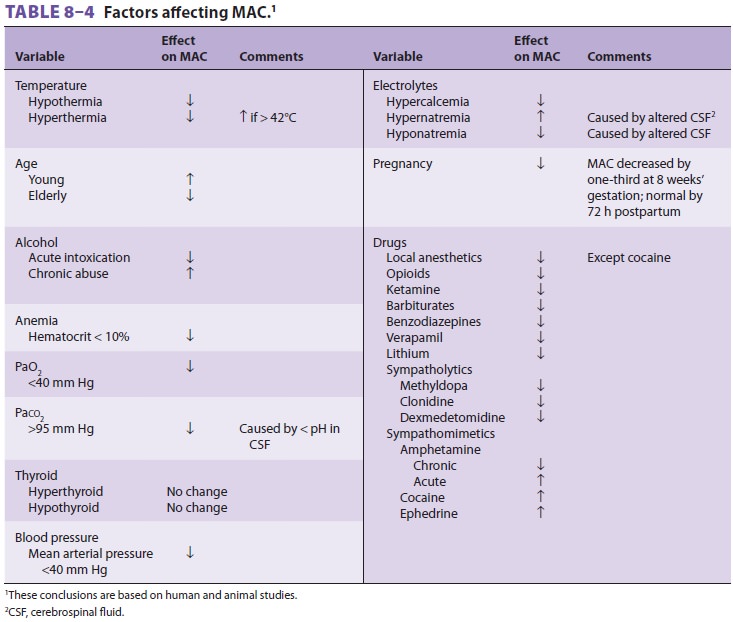Chapter: Clinical Anesthesiology: Clinical Pharmacology: Pharmacological Principles
Minimum Alveolar Concentration
MINIMUM ALVEOLAR CONCENTRATION
The minimum alveolar concentration (MAC)
of an inhaled anesthetic is the alveolar concen-tration that prevents movement
in 50% of patients in response to a standardized stimulus (eg, surgical
incision). MAC is a useful measure because it mir-rors brain partial pressure,
allows comparisons of potency between agents, and provides a standard for
experimental evaluations (Table 8–3). Nonetheless, it should be
remembered that this is a median value with limited usefulness in managing
individual patients, particularly during times of rapidly chang-ing alveolar
concentrations (eg, induction).
The MAC values for different anesthetics
are roughly additive. For example, a mixture of 0.5 MAC of nitrous oxide (53%)
and 0.5 MAC of halothane (0.37%) produces the same likelihood that move-ment in
response to surgical incision will be sup-pressed as 1.0 MAC of isoflurane
(1.7%) or 1.0 MAC of any other single agent. In contrast to CNS depres-sion,
the degree of myocardial depression may not be equivalent at the same MAC: 0.5
MAC of halothane causes more myocardial depression than 0.5 MAC

of nitrous oxide. MAC represents only
one point on the dose–response curve—it is the equivalent of a median effective
dose (ED50). MAC multiples are clinically useful
if the concentration–response curves of the anesthetics being compared are
paral-lel, nearly linear, and continuous for the effect being predicted.
Roughly 1.3 MAC of any of the volatile anesthetics (eg, for halothane: 1.3 × 0.74% = 0.96%) has been
found to prevent movement in about 95% of patients (an approximation of the ED 95); 0.3–0.4 MAC is associated with awakening from
anesthe-sia (MAC awake) when the inhaled drug is the only agent maintaining
anesthetic (a rare circumstance).
MAC can be altered by several
physiological and pharmacological variables (Table
8–4). One of the most striking is the 6% decrease in MAC per decade of
age, regardless of volatile anesthetic. MAC is relatively unaffected by
species, sex, or dura-tion of anesthesia. Surprisingly, MAC is not altered
after spinal cord transection in rats, leading to the hypothesis that the site
of anesthetic inhibition of motor responses lies in the spinal cord.

Related Topics